Архив в PDF формате
Дата публикации статьи в журнале:
Название журнала: Восточно Европейский Научный Журнал, Выпуск:
, Том: ,
Страницы в выпуске: -
Анотация: Abstract.
Distance Education has been recognized as a distinct and important channel
of education in general. It has helped to widen the education base for all kinds of
students. It has reached out to people who would otherwise have remained deprived
of education. The efficacy of distance education is now well acknowledged. Studies
have shown that well-designed and well-managed distance education programs
produce fruitful learning outcomes. These outcomes are equal to those of
conventional face-to-face education. Previously, distance education was considered
as correspondence study. However, recent developments in technology have
dramatically changed the concept of Distance Education. Today, besides print, the
audio, video and computer technologies have become the delivery modes. Distance
education is a phenomenon which is geographically dispersed but educationally and
knowledgably amalgamated. This paper elaborates the specific features of distance
education as a tool for achieving the access of education for unreached.
Ключевые слова:
Keywords: distance education, web-based education, online degrees, online
courses, virtual classroom, technology adoption, technology uptake, technology use,
online programs, learning platforms
Данные для цитирования:
I.V. Derevianko
Kharkiv State Academy of Culture
PhD in Pedagogy, Senior Lecturer,
.
The Survey of Distance Education Degree Programs and Learning Platforms in the USA. Восточно Европейский Научный Журнал. Педагогические науки. ;
():-.








